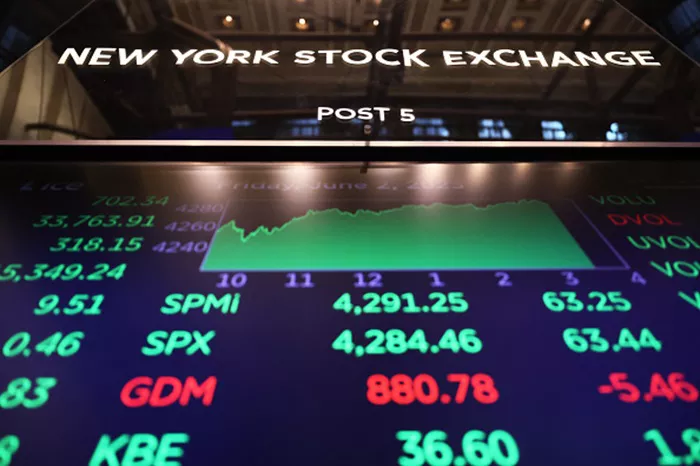In the financial world, the term “outperform” is crucial for investors looking to navigate the complexities of stock markets. It provides a forecast of a stock’s future outperform performance relative to a benchmark or sector. This article offers a thorough exploration of what “outperform” means, its implications, and how it fits into the broader landscape of stock analysis and investment strategies.
1. Understanding the Term “Outperform”
Definition and Meaning
“Outperform” is a rating assigned by analysts or investment firms indicating that a particular stock is expected to deliver higher returns than a specified benchmark or index over a certain period. This rating suggests that the stock will exceed the average performance of its peers or the market average.
Rating Scale: The “outperform” rating is part of a broader rating scale used by analysts, which may include ratings such as “buy,” “hold,” “sell,” “underperform,” and “market perform.”
Benchmarks and Comparisons
Benchmarks: Common benchmarks for comparison include major stock indices such as the S&P 500, NASDAQ Composite, or sector-specific indices. For instance, a stock rated as “outperform” relative to the S&P 500 is expected to surpass the performance of the S&P 500 index.
Peer Comparison: In addition to benchmarks, analysts compare the stock’s expected performance against similar companies within the same industry or sector.
2. The Process of Assigning an “Outperform” Rating
Analyst Research and Evaluation
Analysts employ a variety of methods to determine whether a stock should be rated as “outperform.” This involves:
Fundamental Analysis: This includes evaluating the company’s financial health through metrics such as earnings per share (EPS), revenue growth, profit margins, return on equity (ROE), and debt levels. Analysts assess whether these metrics indicate strong financial performance and growth potential.
Example: A company with a consistently increasing EPS and strong revenue growth may be rated as “outperform” due to its robust financial performance.
Technical Analysis: Analysts study historical price patterns, trading volumes, and technical indicators like moving averages and relative strength index (RSI) to forecast future stock movements.
Example: A stock showing bullish patterns and positive technical indicators might be rated as “outperform” if it suggests upward momentum.
Industry and Market Trends: Analysts consider the overall health of the industry or sector in which the company operates, including market demand, competitive landscape, and economic conditions.
Example: A technology company in a booming tech sector might receive an “outperform” rating if the sector is experiencing significant growth and innovation.
Economic Indicators: Analysts also factor in macroeconomic conditions such as interest rates, inflation, and economic growth, which can impact a company’s performance.
Example: Low-interest rates and economic expansion could favor growth stocks and lead to an “outperform” rating for companies poised to benefit from these conditions.
Comparative Analysis
Relative Strength: Analysts evaluate the stock’s performance relative to its benchmark and peers, identifying whether it is likely to outperform based on past performance and future projections.
Valuation Metrics: Metrics such as the price-to-earnings (P/E) ratio, price-to-book (P/B) ratio, and price-to-sales (P/S) ratio are compared to industry averages to assess whether the stock is undervalued or overvalued.
See also: In What Ways Can Shareholders Make Money from Holding Stock?
3. Implications for Investors
Investment Decisions
Strategic Considerations: Investors often use “outperform” ratings as part of their decision-making process to select stocks that are expected to deliver higher returns compared to the market or sector.
Risk Management: While a stock rated as “outperform” is expected to perform well, investors must weigh potential risks, including market volatility and company-specific issues.
Example: An investor might decide to allocate a portion of their portfolio to a stock with an “outperform” rating but also diversify across other assets to mitigate risk.
Portfolio Management
Diversification: Incorporating “outperform” rated stocks into a diversified portfolio can enhance overall returns. However, investors should balance these with other investments to manage risk effectively.
Performance Monitoring: Investors should continuously monitor the performance of “outperform” rated stocks and adjust their portfolio as needed based on updated ratings and market conditions.
Limitations and Considerations
Forecast Uncertainty: Predictions and ratings are based on current information and assumptions that can change. The actual performance of a stock may deviate from the forecasted outcome due to unforeseen events or changes in market conditions.
Market Conditions: Broader economic factors and market dynamics can impact stock performance, sometimes rendering even well-rated stocks susceptible to adverse conditions.
See also: How Are International Stocks Performing in 2024? A Comprehensive Analysis
4. Real-World Examples
Example 1: Technology Sector
Company A: Suppose Company A, a leading tech firm, is rated as “outperform” relative to the NASDAQ Composite Index. Analysts may have noted:
Strong Financials: Robust revenue growth and high profit margins.
Technological Advancements: Innovative products that position the company favorably in a growing tech sector.
Positive Technical Indicators: Bullish trends in stock price and trading volume.
Example 2: Consumer Goods Sector
Company B: Assume Company B, a consumer goods company, receives an “outperform” rating relative to the S&P 500 Index. Analysts might highlight:
Stable Revenue: Consistent sales and strong market share in a stable industry.
Sector Trends: Increasing consumer spending in the consumer goods sector.
Attractive Valuation: An undervalued stock with growth potential compared to industry peers.
Conclusion
The “outperform” rating serves as a valuable tool for investors by providing insight into a stock’s expected performance relative to a benchmark or sector. While it indicates a positive outlook and potential for higher returns, investors must also consider the associated risks and conduct thorough research. By understanding the nuances of the “outperform” rating, investors can make more informed decisions and strategically position their portfolios for better performance.
Related Topics:

